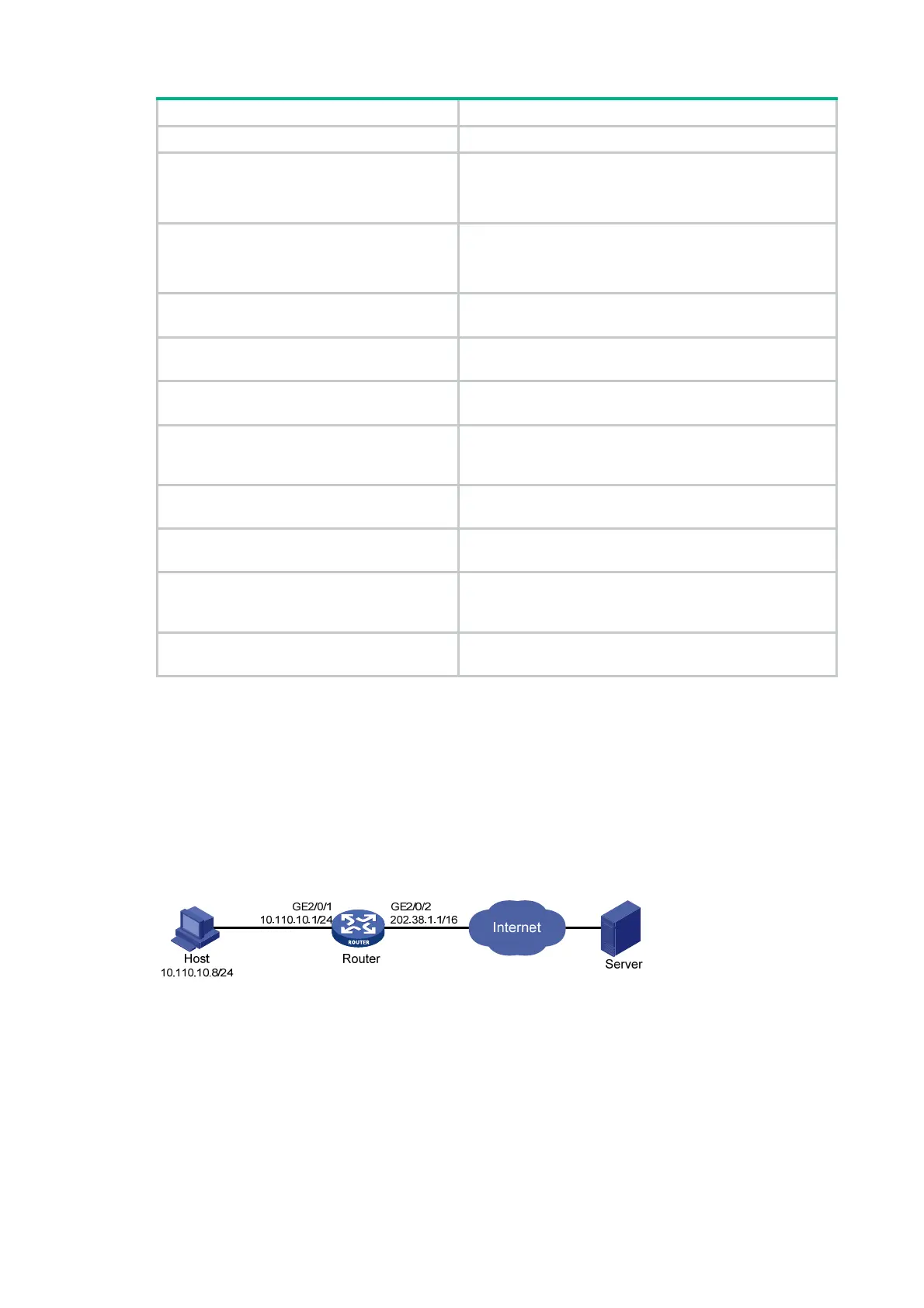158
Task Command
standalone mode).
Display NAT statistics (distributed devices in
standalone mode/centralized devices in IRF
mode).
display nat statistics
[
summary
]
[
slot
slot-number ]
Display NAT statistics (distributed devices in
IRF mode).
display nat statistics
[
summary
]
[
chassis
chassis-number
slot
slot-number ]
Display information about port block group
application for NAT444.
display nat outbound port-block-group
Display information about NAT port block
groups.
display nat port-block-group
[ group-id ]
Display NAT444 mappings (centralized
devices in standalone mode).
display nat port-block
{
dynamic
[
ds-lite-b4
] |
static
}
Display NAT444 mappings (distributed
devices in standalone mode/centralized
devices in IRF mode).
display nat port-block
{
dynamic
[
ds-lite-b4
] |
static
}
[
slot
slot-number ]
Display NAT444 mappings (distributed
devices in IRF mode).
display nat port-block
{
dynamic
[
ds-lite-b4
] |
static
}
[
chassis
chassis-number
slot
slot-number ]
Clear NAT sessions (centralized devices in
standalone mode).
reset nat session
Clear NAT sessions (distributed devices in
standalone mode/centralized devices in IRF
mode).
reset nat session
[
slot
slot-number ]
Clear NAT sessions (distributed devices in IRF
mode).
reset nat session
[
chassis
chassis-number
slot
slot-number ]
NAT configuration examples
Outbound one-to-one static NAT configuration example
Network requirements
Configure static NAT to allow the host at 10.110.10.8/24 to access the Internet.
Figure 64 Network diagram
Configuration procedure
# Specify IP addresses for the interfaces on the router. (Details not shown.)
# Configure a one-to-one static NAT mapping between the private address 10.110.10.8 and the
public address 202.38.1.100.
<Router> system-view
[Router] nat static outbound 10.110.10.8 202.38.1.100

